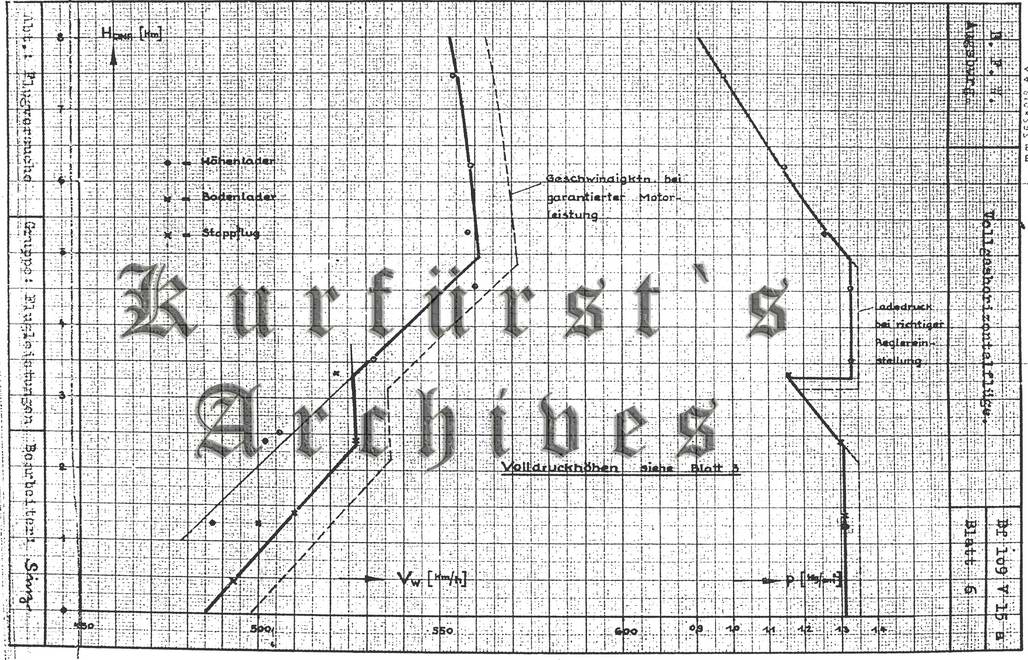Quote:
Originally Posted by Hunin

Quick first impressions:
1. Cl max seems too low for both retracted and fully extended flaps.
Should be 1.4 and 1.9 according to british testing, 1.3 and 1.62 ingame atm.
|
Possibly, I'd have to check the Kurvenwendigkeit der Me typen doc, perhaps I can some data for that..
What is behind it that they did a couple of stall speed trials with the Spit earlier, and from the stall speed they deducted Clmax (which in itself lends some room for error, recall those lenghty discussions about what 'stall speed' really is'?). Based on the date, they calculated a doghouse turn chart for the Spi.
When the 109E-3 was handed over by the French for testing, the British wanted a similiar graphical comparison made. They made a similiar test procedure to establish 109E stall speeds, based on that, the Clmax.

at
http://www.kurfurst.org/Tactical_tri...ls/Morgan.html
Quote:
Originally Posted by Hunin

2. Turn time of 25 seconds corresponds with british testing but is significantly higher then the 18. something stated in the official Baubeschreibung.
|
As noted above, there was no actual measurement of the 109E turn times by British; or if there were, the 25 seconds value was not derived from testing. The Kurwenwendigkeit der Me typen part I. report by Messerschmitt AG calculates the turn time with 990PS on the deck, using proper propellor effiency curves etc.
It gives the turn time for 109E as 18.92 secs on the deck, a fairly believable number IMHO. What complicates things that appearantly we have (ca. 50HP higher) DB 601Aa ratings present, not DB 601A the report assumes. Well say 18-18.5 secs in this case. Actually it should be possible to calculate it precisly using the report.
Quote:
3. 460 km/h on the deck corresponds with both german testing of Wrk.Nr. 1792
and swiss testing. The Baubeschreibung on the other hand gives 500 km/h.
Any ideas where that difference might come from Kurfy?
|
I am not sure, but I and others have a very strong suspicion the 460-470ish values are either for the 30-min rating, or due for using the high altitude (2nd speed, FS gear etc.) blower at low level too.
The conditions of the Wrk.Nr. 1792 test are not known for certain, as the report aimed for relative speeds w. and w/o MG FF barrels in the wing, and not absolute figures. Even boost is uncertain, a the report mentions that the figures are not corrected for nominal engine output etc.
The Baubescreibung is the official performance specs for the 109E, which the manufacturer
guaranteed to be met withon +/- 5% tolerenace. Those Emils that could not satisfy the specs were not accepted by BAL, the LW's quality control organisation. Even at the war's end!
Moreover the 500/570 specifications laid down in the Bbschr. 109E paper were confirmed with the detailed report of the Emil prototype:
http://www.kurfurst.org/Performance_...w_109V15a.html

and by French testing of Bf 109E-3 WNr. 1340 (same aircraft as tested by the Brits later) also seem to confirm that the level speed figures laid down in the in German specs can be confirmed:
http://www.kurfurst.org/Performance_...formanceT.html
(beware of the bewildering combination of open/closed raditors, RPMs and manifold pressures used.. its a bit of a pity that the French used Hgmm for boost instead of ata. Confusing..)
Besides if one uses simple common sense, its quite easy to see. If you look at the Spitfire and Bf 109E speeds and powers at rated altitude, you'll find that that both do around 570 km/h, but the Spit has actually quite a bit of more power at this altitude (as opposed to popular knowledge, the Merlin III was pretty good at alt). It follows that it has more drag. Now, at SL the Spit does, iirc some 282 mph at +6 1/4 boost, which is 890 HP. And the 109 there has 990 (601A-1) to 1050 HP (601Aa). It follows that should be a good deal faster than 282 mph (454 kph), with 150 HP extra in less draggy airframe..